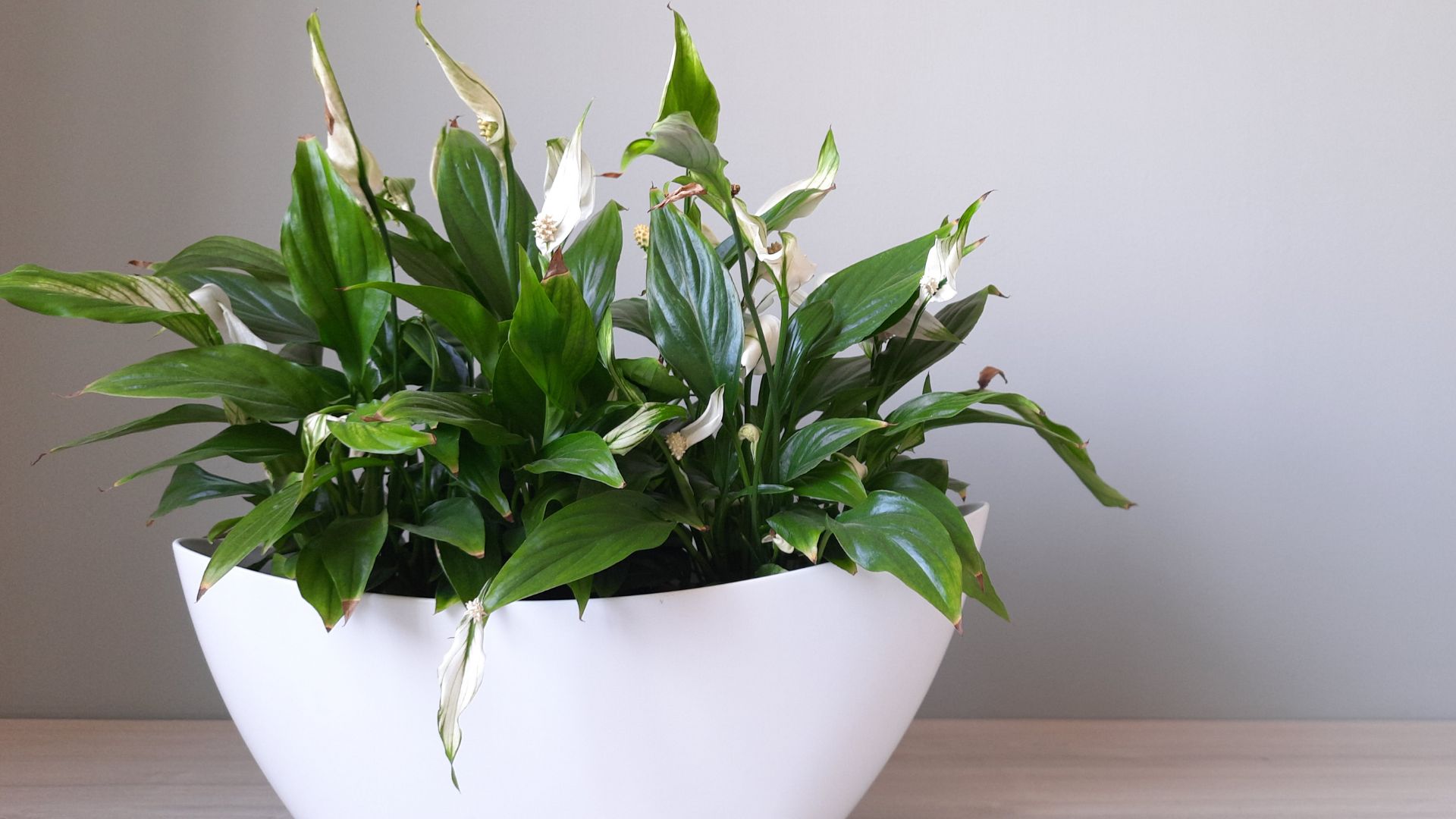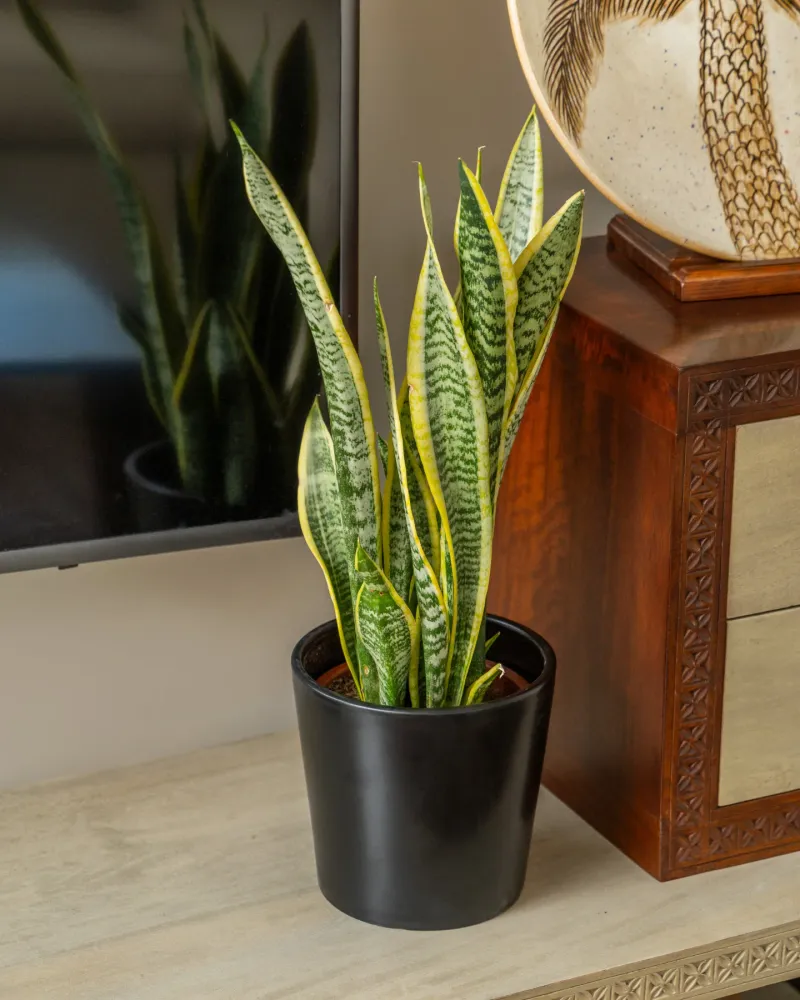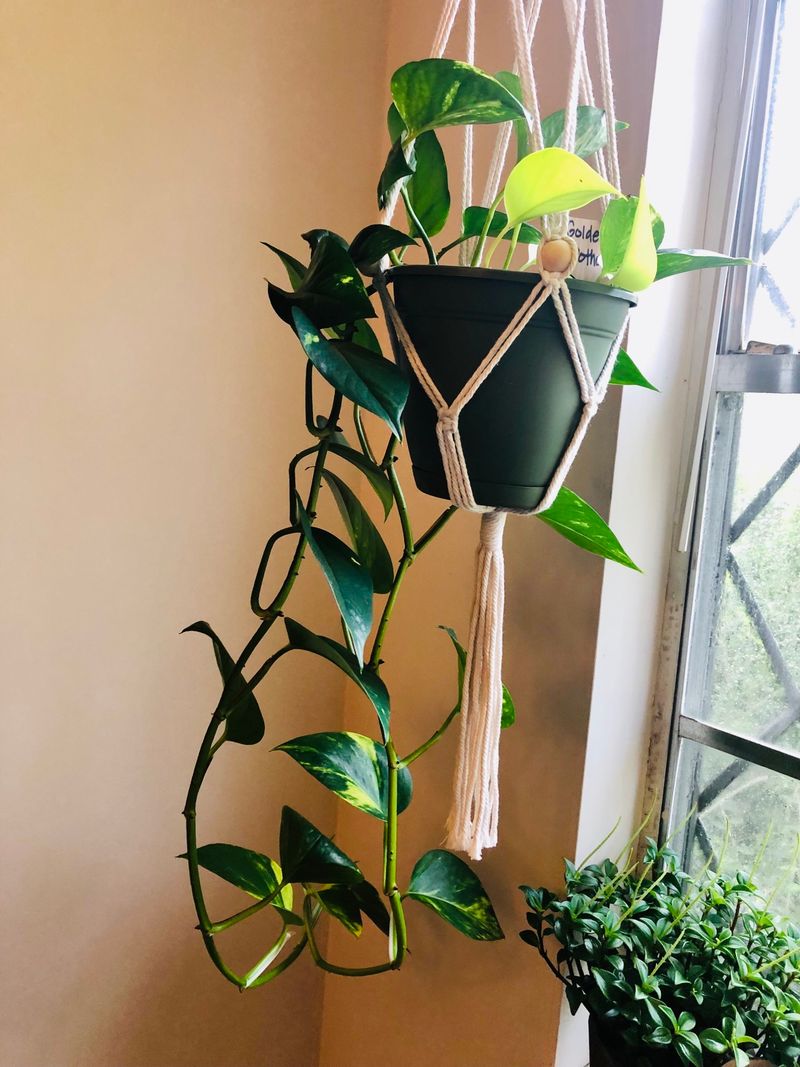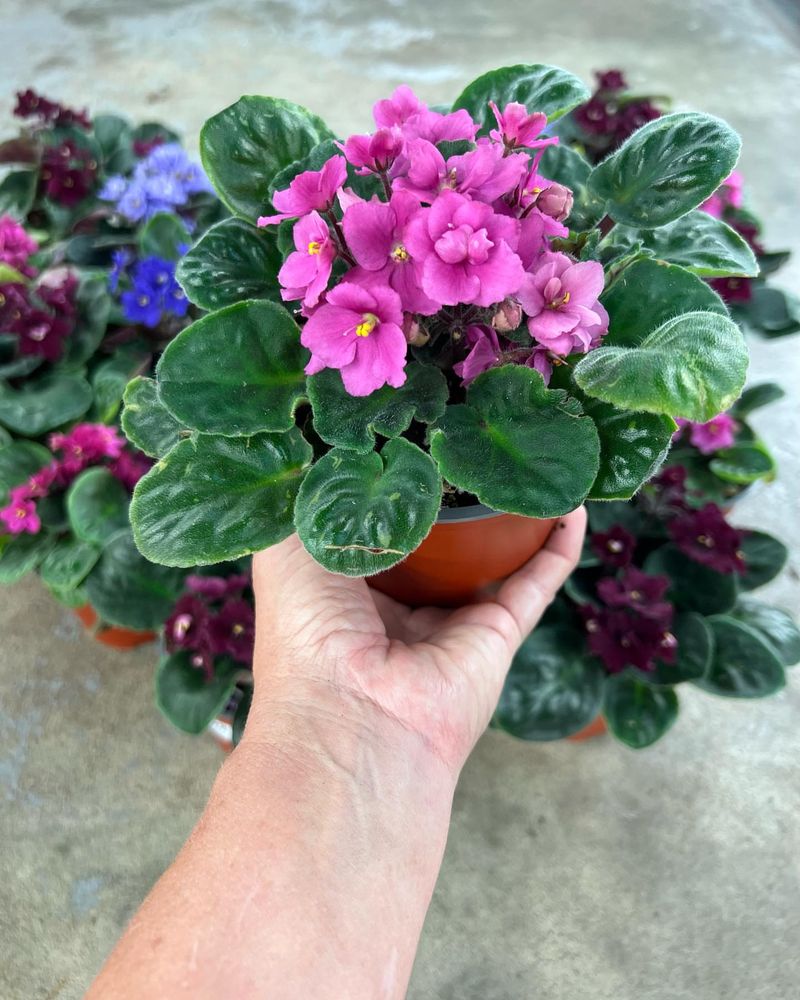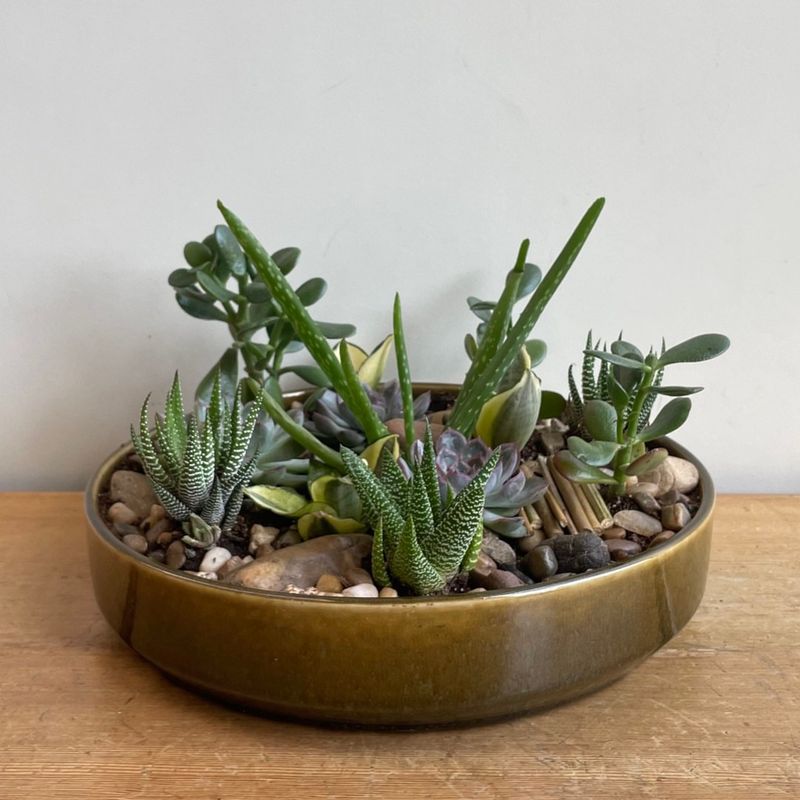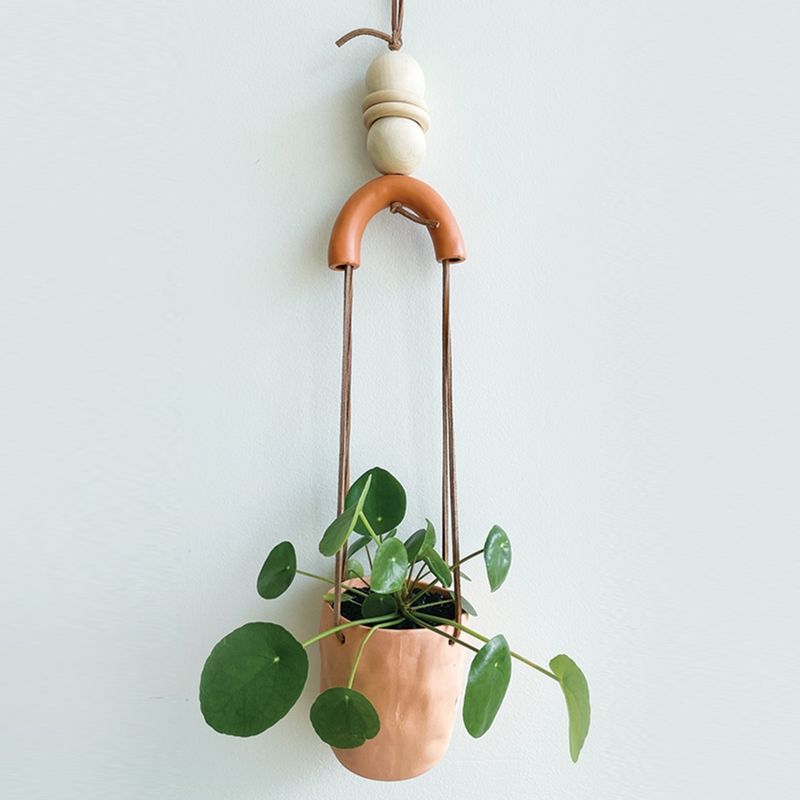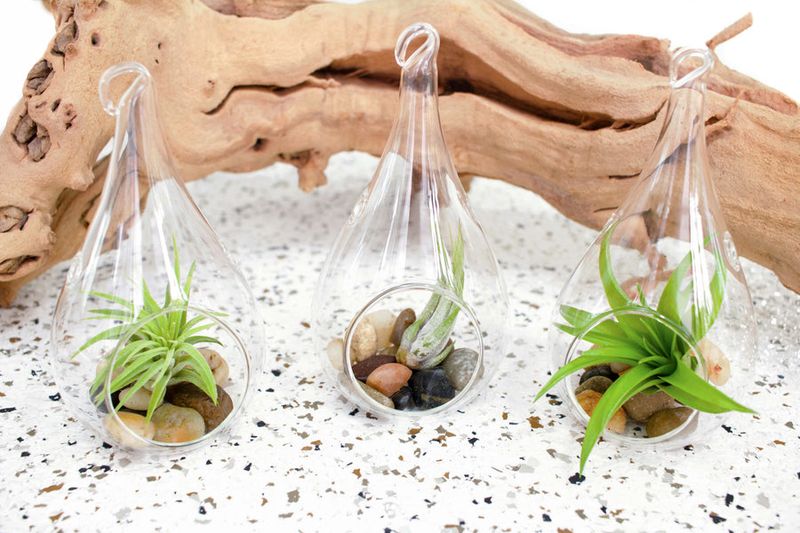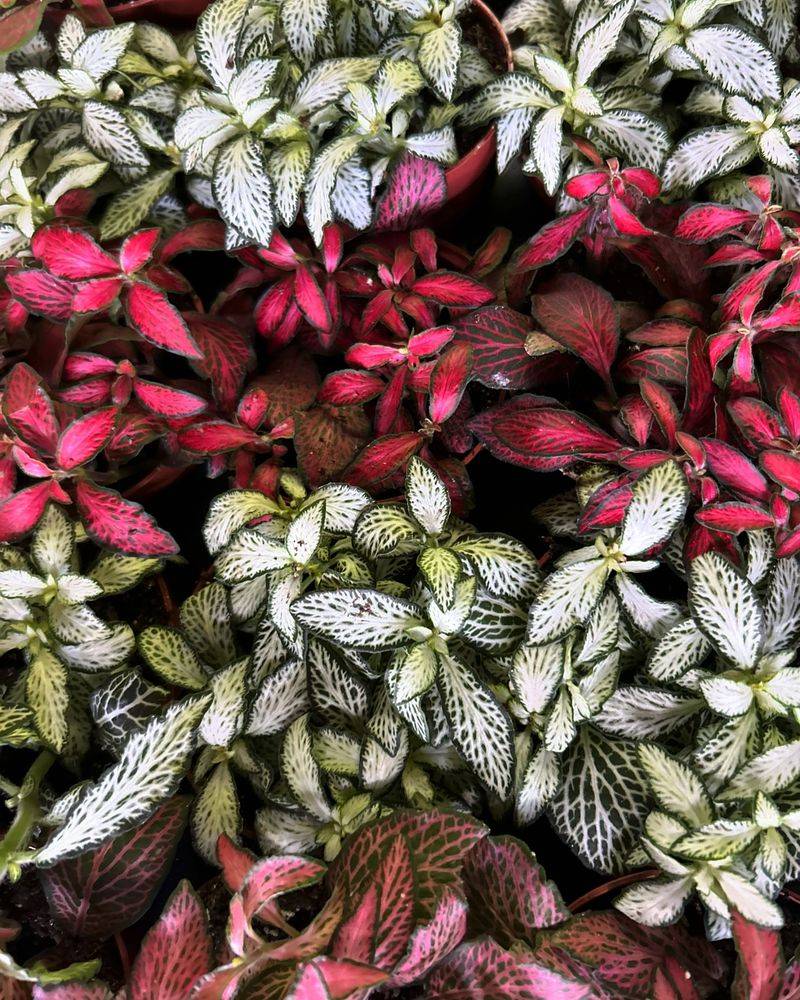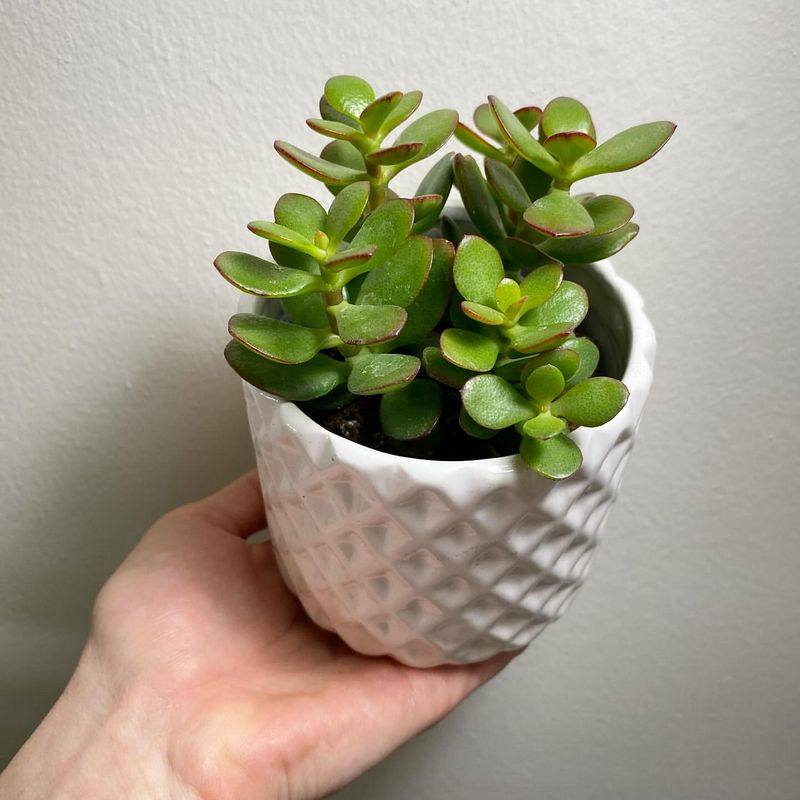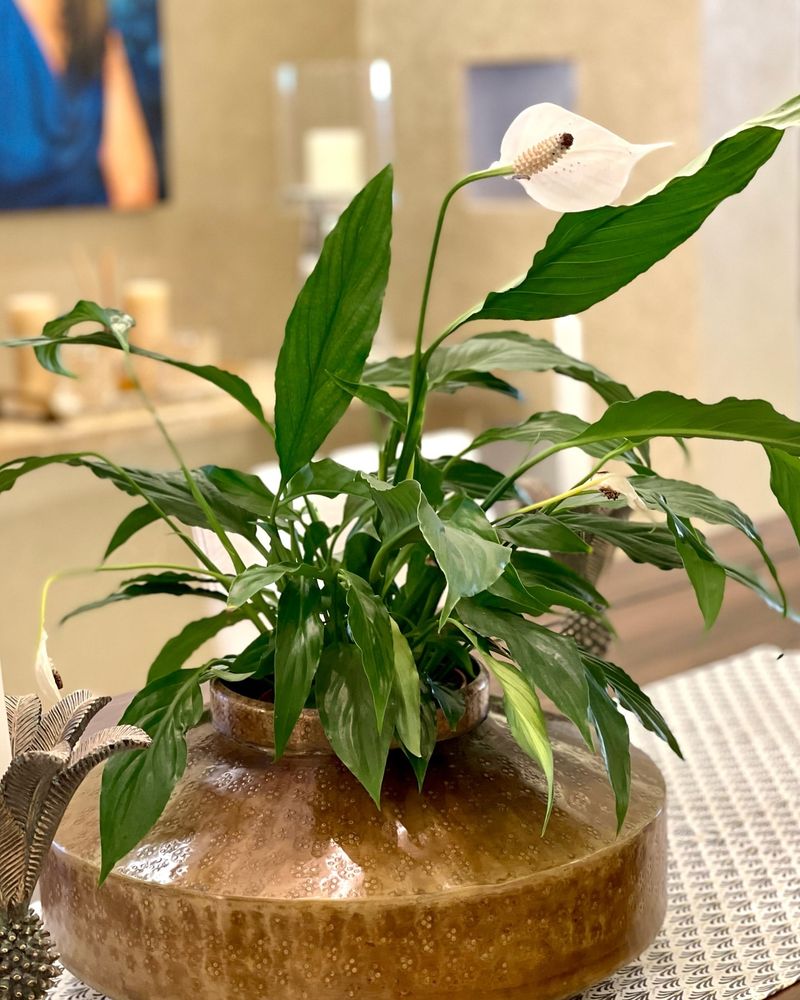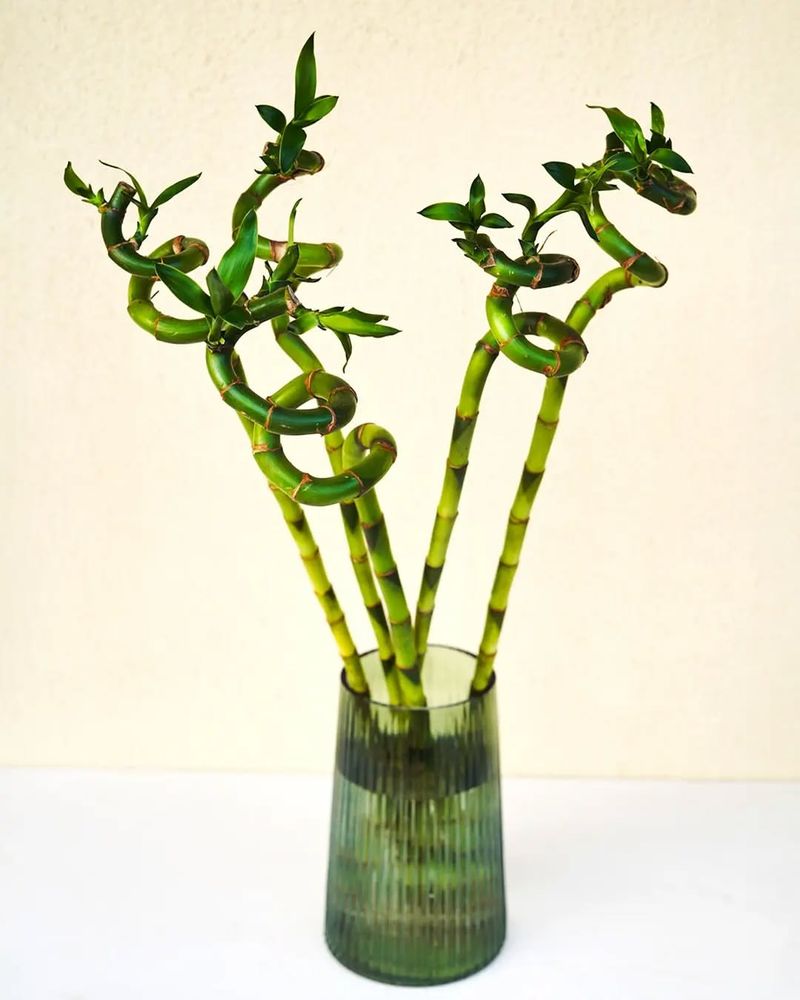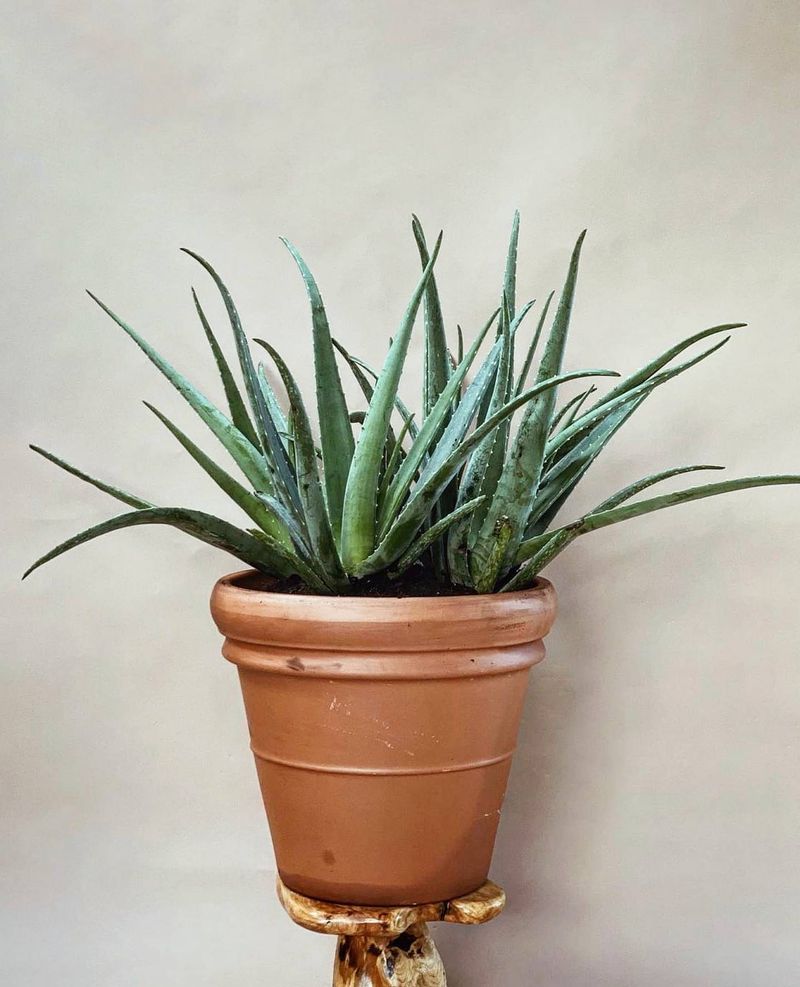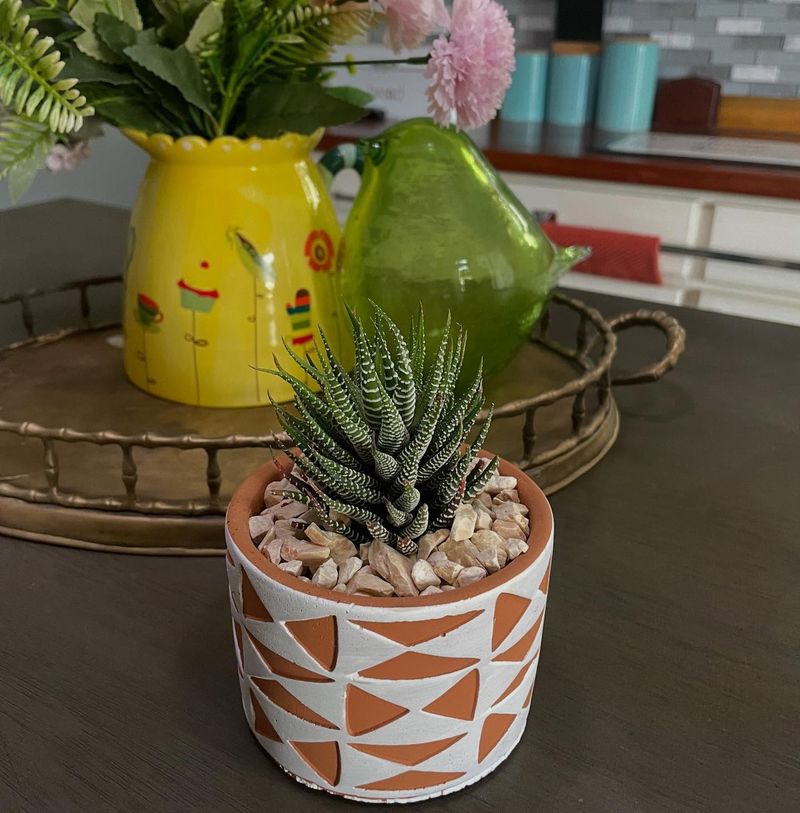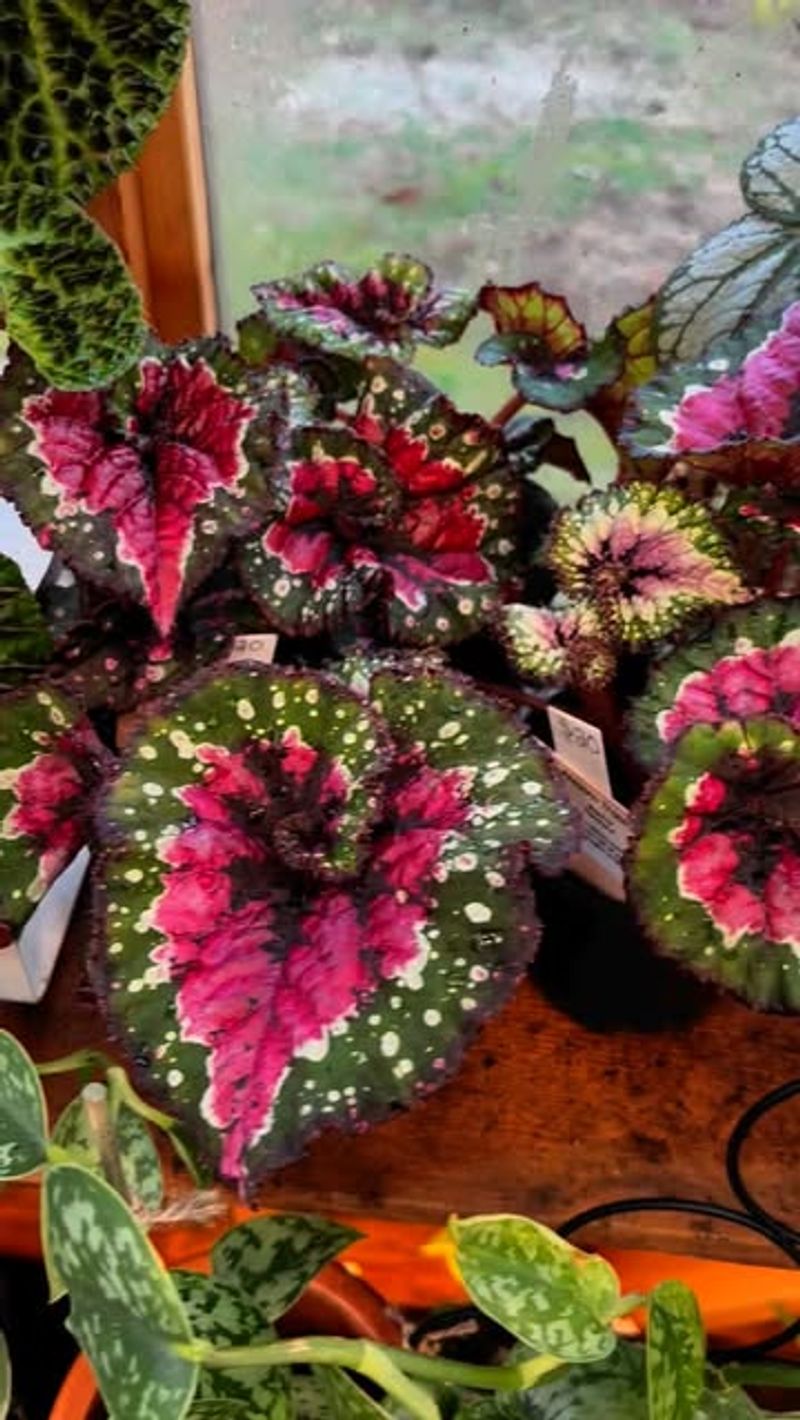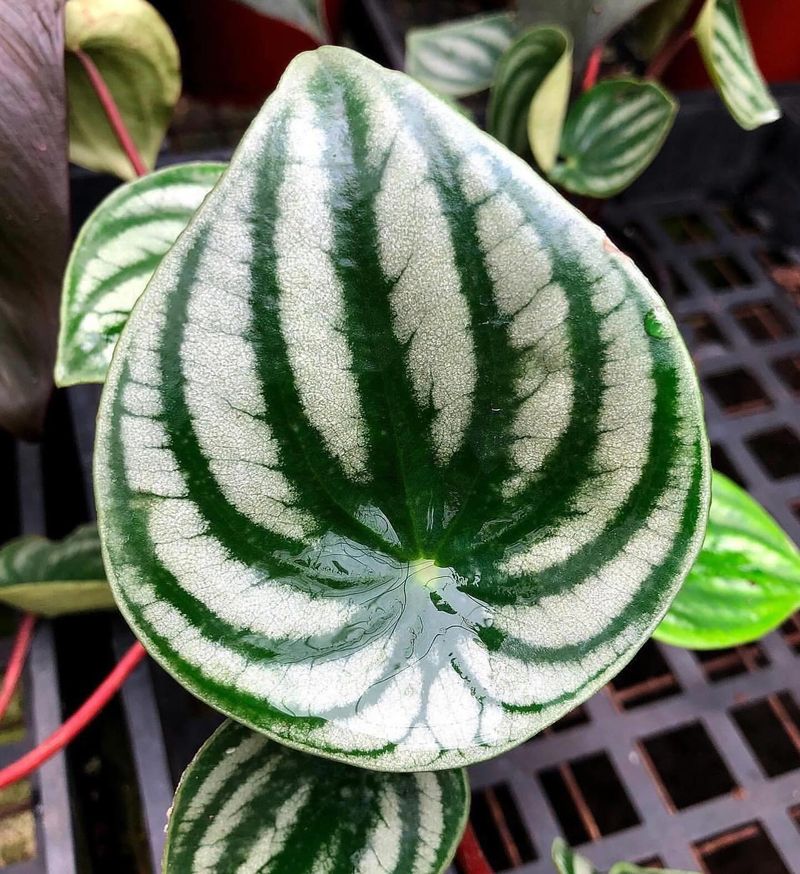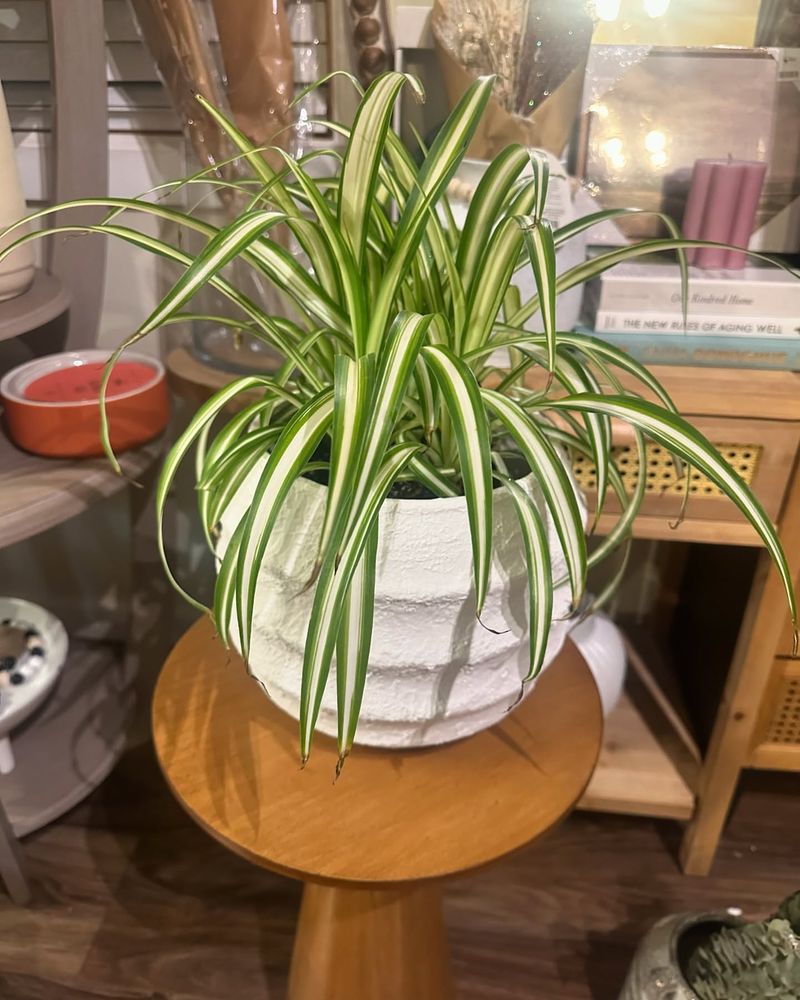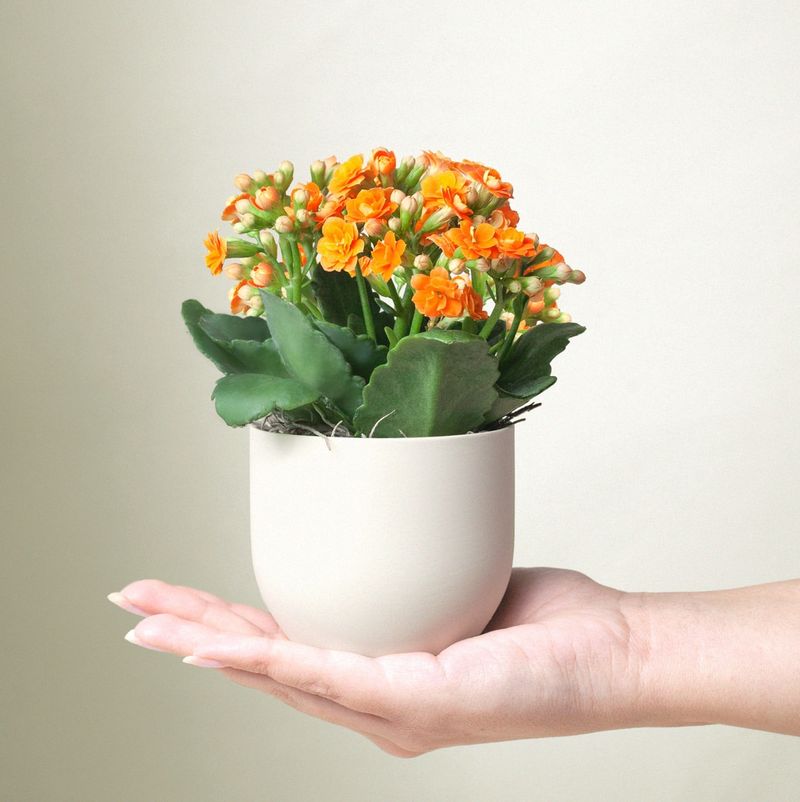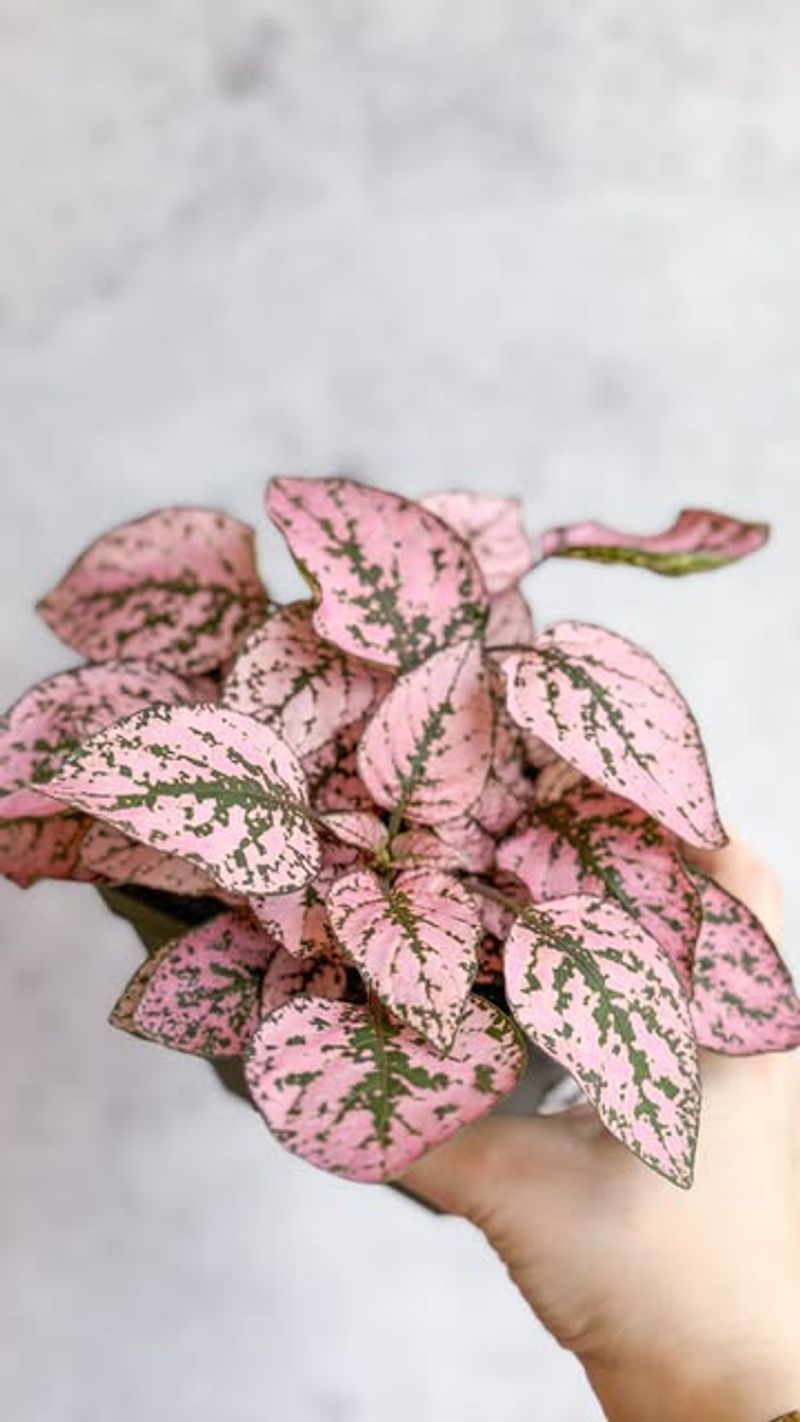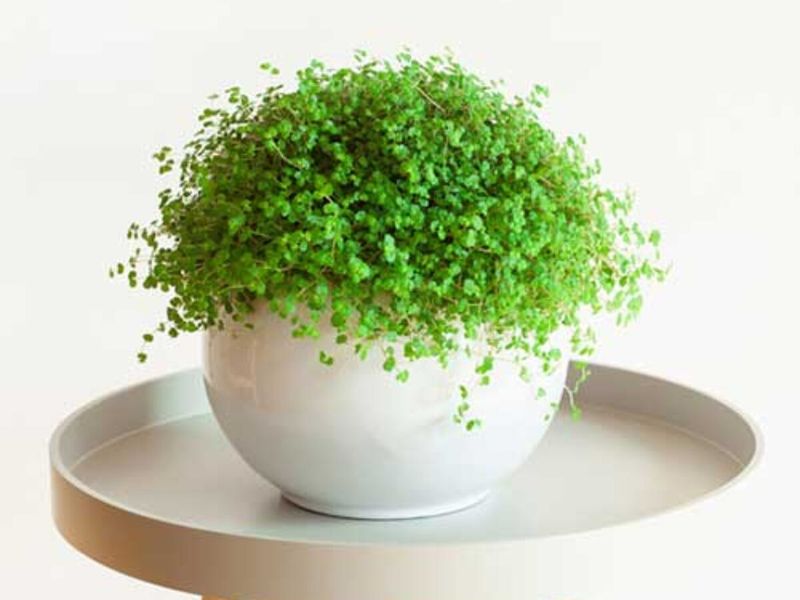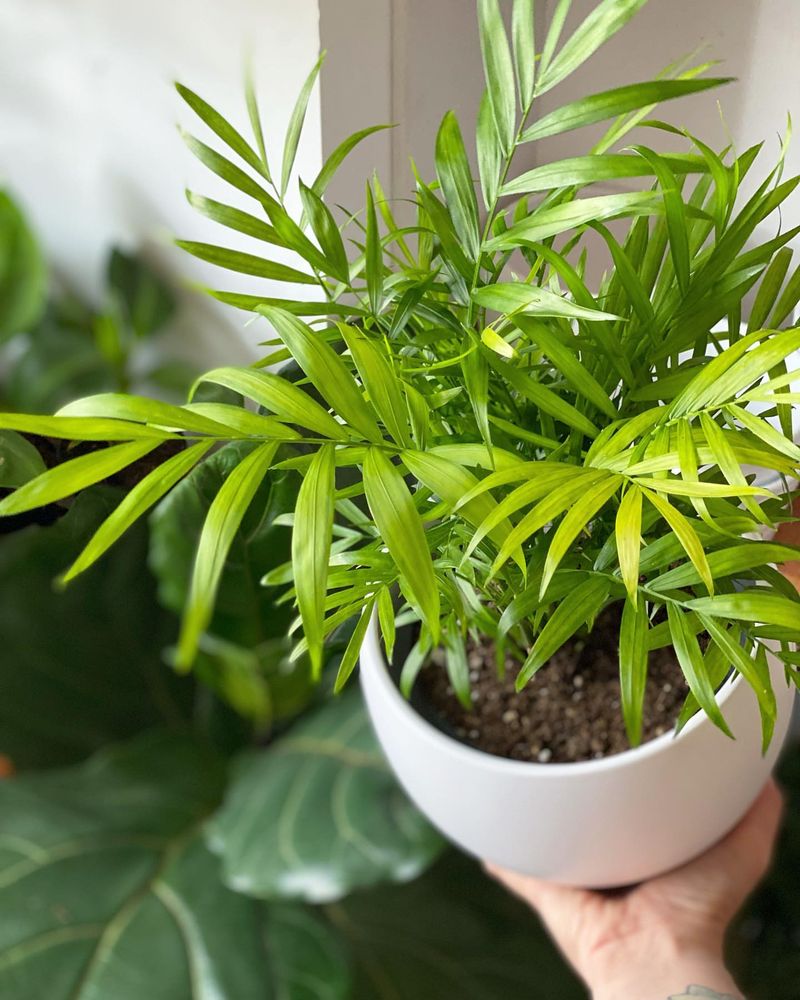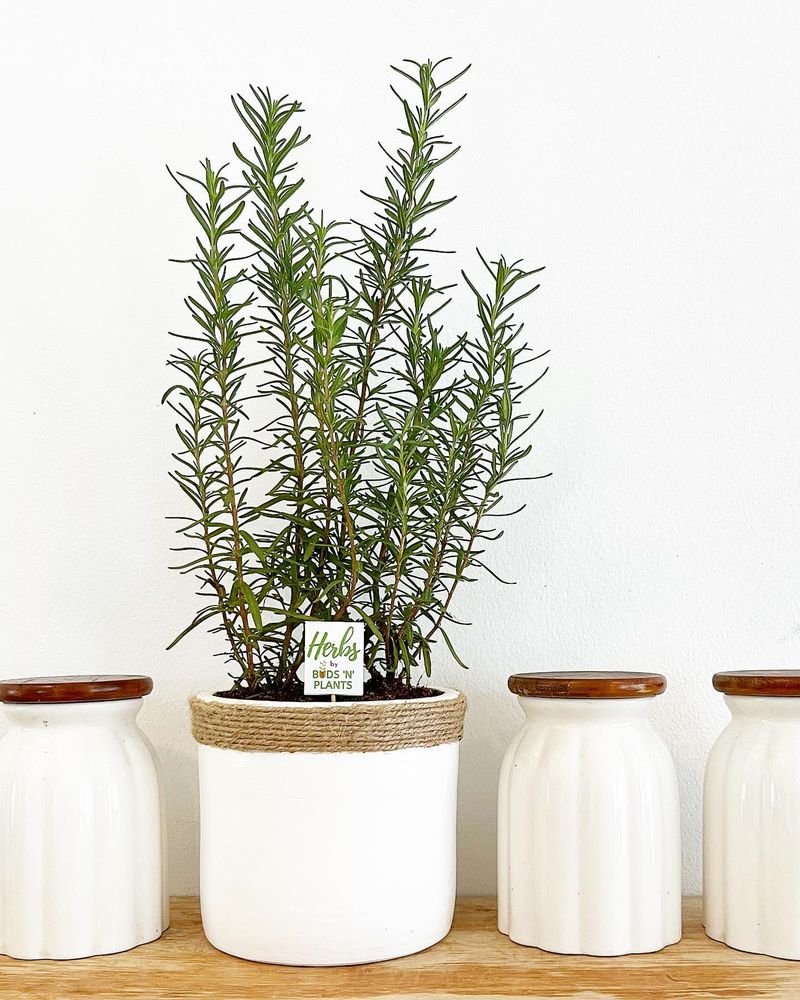Adding plants indoors brings a sense of life and calm, while naturally freshening the air around us. Even if your space is tight, there’s a whole world of greenery that thrives in tiny pots and corners without needing much room to spread out.
These mini companions look right at home on windowsills, desktops, and bookshelves—bringing charm, color, and that little spark of nature to places we use every day. They quietly enhance your space without getting in the way.
Whether it’s a trailing pothos, a cheerful succulent, or a compact fern, small container plants make any room feel more grounded. With the right light and a splash of care, they’ll thrive—no garden required.
1. Snake Plant
Looking for a plant that’s nearly impossible to kill? These tough guys survive weeks without water and don’t mind low light conditions. I’ve had one sitting on my bathroom shelf for years with minimal attention.
The sword-like leaves grow upright, saving precious space in tiny pots. They’re excellent air purifiers too, filtering out toxins while you sleep.
Just be careful not to overwater – that’s the only way to harm these hardy plants. Let the soil dry completely between waterings.
2. Pothos
Trailing vines make pothos perfect for high shelves where the stems can cascade down. Mine started in a tiny pot and now decorates my entire bookcase with minimal effort.
You can find them in several varieties – golden, marble queen, neon – all equally easy to grow. Simply water when the top inch of soil feels dry to touch.
Bright indirect light brings out their beautiful variegation, but they’ll tolerate dim corners too. Trim occasionally to keep them bushy and full.
3. African Violet
Delicate purple, pink, or white flowers bloom year-round when these little plants are happy. They prefer bright indirect light and consistent moisture – not too wet or dry.
Unlike many flowering plants, African violets stay naturally compact. My grandmother kept dozens on her kitchen windowsill in tiny clay pots, creating a miniature garden.
Water from below by placing the pot in a dish of room-temperature water for 30 minutes. Cold water on the fuzzy leaves can cause brown spots.
4. Succulents
Available in countless shapes, colors, and sizes, succulents are the ultimate small-pot champions. Their water-storing leaves mean they rarely need attention – perfect for forgetful plant parents.
Give them a sunny window and well-draining soil. My desk collection gets watered just once every two weeks, and they’re thriving.
Mix different varieties in a single pot for an eye-catching arrangement. Just remember that succulents need drainage holes to prevent root rot.
5. Chinese Money Plant
Round, coin-shaped leaves on slender stems give this plant its distinctive look and name. The neat, compact growth habit makes it ideal for small spaces and tiny containers.
Place in bright indirect light for the best results. Direct sun can scorch the leaves, while too little light leads to leggy growth. Let the soil dry out between waterings.
These plants produce plenty of baby plants around the base – perfect for sharing with friends when your collection outgrows its space.
6. Air Plants
No soil needed! These unusual plants absorb water and nutrients through their leaves. Simply mist them a few times a week or soak in water for an hour every 7-10 days.
Display options are endless since they don’t require traditional pots. Mine sit in tiny glass globes hanging by my window, creating a floating garden effect. Bright indirect light keeps them happy.
The silvery-green spiky foliage adds interesting texture to any small space without taking up precious surface area.
7. Nerve Plant
Stunning veined leaves in green, pink, red, or white patterns make this plant a showstopper despite its small size. The low, spreading growth habit fills small pots beautifully.
Keep the soil consistently moist but not soggy. These dramatic plants will quickly let you know they’re thirsty by wilting dramatically – but they bounce back just as fast with water.
Higher humidity keeps them happiest, making them perfect bathroom companions. A small pebble tray with water underneath helps maintain moisture in drier rooms.
8. Jade Plant
Often called money trees, these miniature tree-like succulents symbolize prosperity. The thick trunk and oval leaves develop a beautiful red tinge when placed in bright light.
Water only when the soil is completely dry. My jade has lived in the same tiny pot for years, growing slowly into a miniature bonsai-like specimen.
Their compact root systems make them ideal for small containers. With proper care, these plants can live for decades, growing more character and charm with age.
9. Peace Lily
Elegant white flowers rise above glossy green leaves, even in low light conditions. Surprisingly, peace lilies stay relatively compact in small pots, making them perfect for tight spaces.
Water when the leaves start to droop slightly. Overwatering causes yellow leaves, while underwatering is signaled by dramatic wilting – they’re great communicators!
Known for their air-purifying abilities, these plants filter out common household toxins. Just keep them away from curious pets, as the leaves can cause irritation if chewed.
10. Lucky Bamboo
Growing in just water or pebbles, lucky bamboo eliminates the need for soil completely. The spiraling stems can be trained into various shapes as they grow. Change the water every few weeks to keep it fresh.
I’ve had mine for over five years in the same small glass container, adding only a drop of liquid fertilizer occasionally.
According to feng shui principles, the number of stalks has different meanings – three for happiness, five for wealth. Keep out of direct sunlight to prevent algae growth in the water.
11. Aloe Vera
Beyond its medicinal uses, aloe makes an attractive, low-maintenance houseplant. The fleshy, pointed leaves grow in a rosette pattern, staying surprisingly compact in small pots.
Place in bright light and water deeply but infrequently. Allow the soil to dry completely between waterings – once every 2-3 weeks is often enough. Break off a leaf when needed for burns or skin irritations.
The gel inside provides instant relief, making this both a decorative and practical plant for any small space.
12. Haworthia
Resembling tiny aloe plants, haworthias feature striking geometric patterns and translucent “windows” on their leaf tips. They’re among the slowest-growing succulents, rarely outgrowing small containers.
Bright indirect light keeps them happy without the scorching risk that affects other succulents. Their shallow root systems make them perfect candidates for shallow dishes and tiny pots.
Water sparingly – about once every 2-3 weeks. My collection sits on my office desk, thriving despite weeks of neglect during busy periods.
13. Rex Begonia
Stunning colorful foliage in swirls of silver, purple, pink, and green makes these plants look painted by artists. Despite their exotic appearance, they grow well in small pots.
Moderate indirect light brings out their best colors. Direct sun can burn the delicate leaves, while too little light dulls their vibrant patterns. Keep soil lightly moist but never soggy.
Higher humidity prevents crispy leaf edges – try grouping with other plants or using a pebble tray for added moisture.
14. Peperomia
Available in dozens of varieties with different leaf shapes, colors, and patterns. The compact growth habit and tiny root systems make them ideal small pot dwellers.
Water when the top inch of soil feels dry. These plants store water in their thick leaves, allowing them to tolerate occasional neglect without drama. Bright indirect light keeps them happiest.
My watermelon peperomia sits in a 3-inch pot on my desk, its striped leaves adding a touch of whimsy to my workspace.
15. Spider Plant
Arching variegated leaves and dangling baby plants make these classics entertaining to grow. Young spider plants stay quite compact before producing their famous “spiderettes.”
Bright indirect light brings out the cream stripes in the foliage. Water when the top inch of soil feels dry – about once a week in most homes.
Remove the baby plants for propagation or leave them attached for a cascading effect. Brown leaf tips usually indicate dry air or fluoride in tap water – try using filtered water instead.
16. Kalanchoe
Clusters of tiny flowers in bright red, orange, pink, or yellow bloom for weeks above thick, scalloped leaves. After flowering, they remain attractive foliage plants. Provide bright light to encourage blooming.
These succulents prefer to dry out between waterings – too much moisture leads to root rot. The compact growth habit makes them perfect for small pots.
Mine sits on my kitchen windowsill, providing cheerful color through the winter months when little else is blooming indoors.
17. Polka Dot Plant
Freckled leaves in pink, white, or red splashes against green backgrounds make these plants irresistibly cheerful. Their bushy growth stays naturally small in tiny containers.
Pinch back regularly to encourage bushiness. Without trimming, they can become leggy, but with occasional pruning, they remain full and compact. Keep soil consistently moist but not waterlogged.
Bright indirect light intensifies the colorful spots. Higher humidity prevents leaf edges from browning in dry indoor environments.
18. Baby Tears Plant
Tiny round leaves on delicate stems create a moss-like carpet effect in small containers. The creeping growth habit makes it perfect for dish gardens or hanging baskets.
Keep soil consistently moist but not soggy. These plants prefer higher humidity and moderate light – making them ideal bathroom companions. Trim occasionally to maintain shape and fullness.
The fresh bright green color adds a soft, woodland feel to any space, creating the illusion of a miniature landscape in just a few inches.
19. Parlor Palm
Feathery fronds bring tropical vibes to any space, even in pots as small as 4 inches. Unlike other palms, these stay naturally compact for years before outgrowing their containers.
Tolerant of low light conditions, making them perfect for dim corners. Water when the top inch of soil feels dry – usually once a week in average home conditions.
Clean, graceful lines add architectural interest without overwhelming small spaces. My parlor palm has lived on my bookshelf for three years, growing slowly but steadily in its tiny pot.
20. Rosemary
Fragrant needle-like leaves make this herb both decorative and useful in the kitchen. The woody stems can be trained into topiary shapes as they grow.
Place in your sunniest window – rosemary needs at least 6 hours of bright light daily. Allow soil to dry slightly between waterings, but never completely.
Pinch tips regularly to encourage bushiness and harvest for cooking. The pleasant pine-like scent freshens the air naturally, while the upright growth habit maximizes vertical space in small pots.

